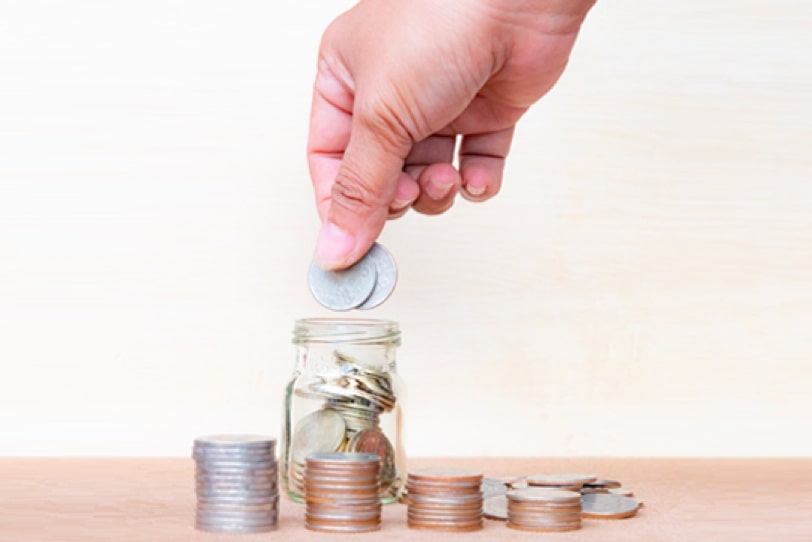5 effective ways to build an emergency fund
Building an emergency fund: Preparing for the unexpected
Building an Emergency Fund: Preparing for the Unexpected
One of the most crucial tools in personal finance is the emergency fund. Without this, it’s difficult to seize opportunities, start investing, or to buy big ticket items like a home with peace of mind. However, building an emergency fund can mean much more than just “putting aside some money.” There are strategies you can use to make building an emergency fund more painless, as well as to optimise the savings. Here’s what you need to know:
What should be the target amount of the fund?
First off, do note that you should not put all your wealth into pure savings alone. Doing so is counterproductive due to inflation rate risks. Simply put, most savings funds do not have high interest rates, and the cost of living tends to rise faster than the fund can grow. As such, you should save enough for an emergency, while investing the rest to keep up with inflation.
For most people, a common guideline is to save up six months of expenses. This refers to mandatory expenses such as your home loan repayment, utilities bill, cost of transport, food, and clothing, as well as healthcare. So, if your total expenses in this area are $2,500 a month, for example, you might aim to save up $15,000 for your emergency fund. Any amount after this might be invested to grow instead.
However, there are some exceptions to the rule. Individuals with dependents (e.g., elderly parents to look after, or special needs family members) may need to save more, as they are saving not just for themselves, but their dependents.
Likewise, those with variable income sources - such as those who collect rental income, or work on commissions - might aim to save as much as 12 months of their expenses. This is to cope with added risks such as a decline in earnings, rental vacancies, or other similar issues.
What are effective ways to build an emergency fund?
● Automate the process, to remove emotion
● Pay down high-interest debts while building the fund
● Ensure that the fund is accessible when you need it
● Participate in savings challenges
● Use bank accounts with bonus tiers
1. Automate the process, to remove emotion
Try to use banking methods such as GIRO, salary crediting, or other methods to build a savings fund. For example, you might use a programme that automatically credits 20% of your paycheck to your emergency fund, the moment you get paid.
This ensures that you “pay yourself first,” and it removes the temptation to spend the money. Avoid methods like spending first and hoping that you will have “around 20%” left by the end of the month. You’re less likely to succeed, as we’re often tempted by “must buy” events like a sudden sale, or a need for retail therapy after a tough day.
The less you need to think about saving, the more painless it tends to be.
2. Pay down high-interest debts while building the fund
If you currently have high-interest debt (personal loans or credit cards) don’t ignore these or only pay the minimum.
You should place equal emphasis on paying down these debts, as you try to build the emergency fund. Instead of saving 20% of your paycheck, for example, you might commit 10% to your emergency fund and 10% to paying down the loans. This ensures that, in a pinch, you won’t be forced to spend what you’ve already saved up just to make your loan repayments.
High-interest loans, besides costing you a lot of money in the long run, can affect your cash flow and make attempts to build an emergency fund less sustainable.
3. Ensure that the fund is accessible when you need it
Resist the temptation to put your emergency fund in higher-earning products, which come with long maturity periods. A fixed-deposit may give you a higher interest rate than a savings account - but if you need the money for an emergency, you won’t be able to withdraw the cash without penalties (usually the loss of any accrued interest, plus administrative fees).
Ideally, an emergency fund should be kept in the form of cash, and not assets that need to be liquidated. If you try to keep your emergency fund in the form of stocks or gold, for example, you may be forced to sell at a time when the asset values are low. This could significantly diminish the value of your fund.
4. Participate in savings challenges
Common savings challenges are no-spend days (designate one day of every week when you are not allowed to spend money), or the 52-week savings challenge (save $1 on week one, $2 on week two, etc. and by the end of the year you’d have saved $1,378).
You can either channel the savings toward your emergency fund or do this while building the emergency fund. You’ll find that setting aside money is less painful, when you turn the process into a game.
As an aside, seeing your savings grow is quite addictive: as you see your money grow via these challenges, you will gain psychological momentum. You’ll find it more and more exciting - and painless - to save and grow your fund.
5. Use bank accounts with bonus tiers
Some banks provide an interest rate bonus on savings accounts, for each activity you do with them. For example, you might get an extra 0.05% interest just for crediting your salary to a particular bank. If you also use that bank’s cards, save up to a certain amount with them, or get your home loan from the same bank, all of these may “stack” interest rate bonuses.
This can help you to grow your emergency fund quicker, so do check out different financial institutions to compare. That being said, don’t be tempted into deals such as spending more (e.g., having a minimum spend on bank cards) just to raise the interest rate a little.
Ensure you have proper insurance coverage for the BIG emergencies, as an emergency fund alone might not suffice
An emergency fund can sustain you for short periods, such as when you’re between jobs. However, you can’t rely on just an emergency fund for prolonged and unpredictable expenses, such as critical illnesses (cancer, heart attack, stroke, etc.)
For these major crises, ensure you have a comprehensive critical illness plan; and with sufficient coverage, you might even be able to get treatment while leaving your emergency fund intact. Some critical illness plans can start covering you from the earliest stages of illness, or even protect you again if the illness recurs. Use these plans to complement your emergency fund and find financial peace of mind.
Let us match you with a qualified financial representative
Our financial representative will answer any questions you may have about our products and planning.








